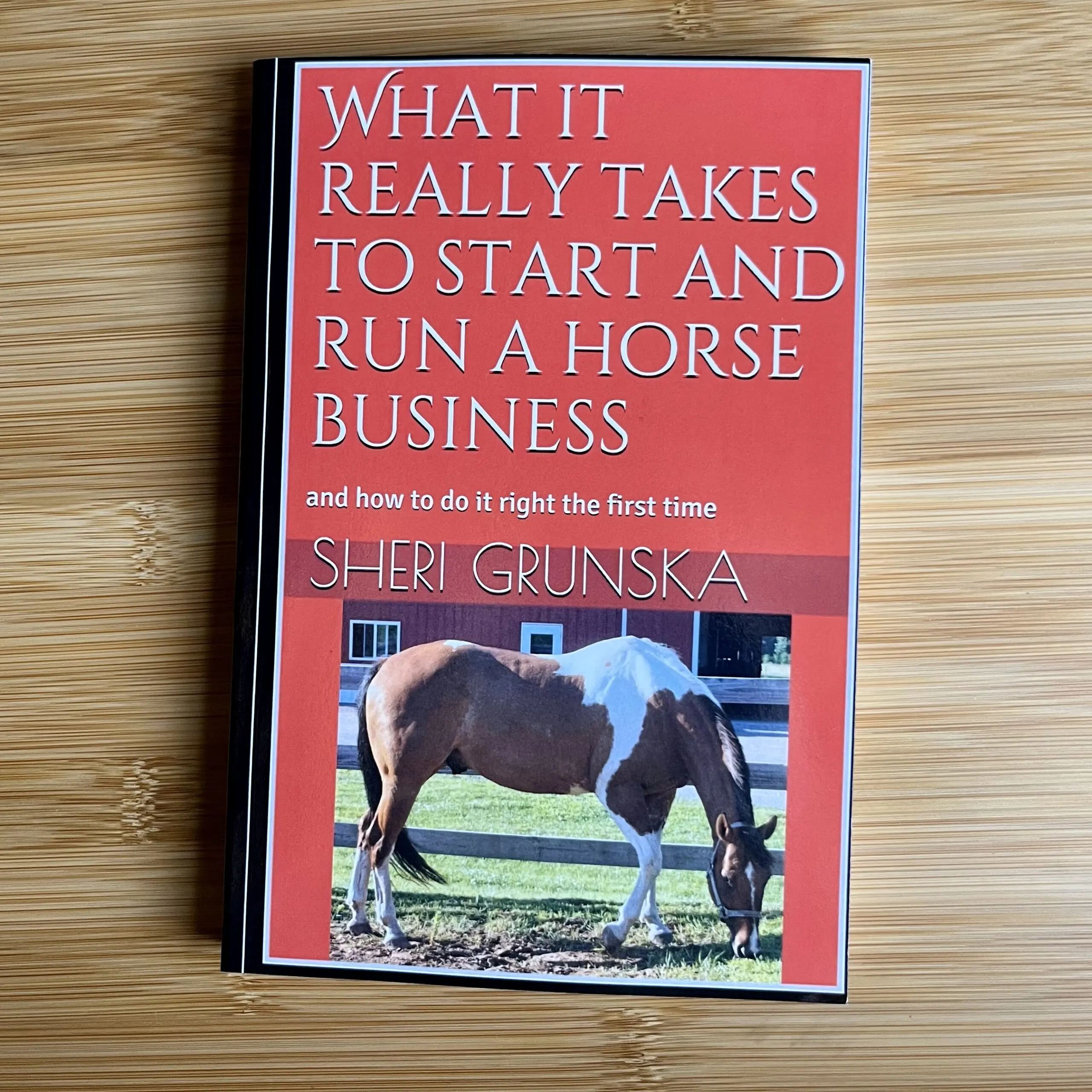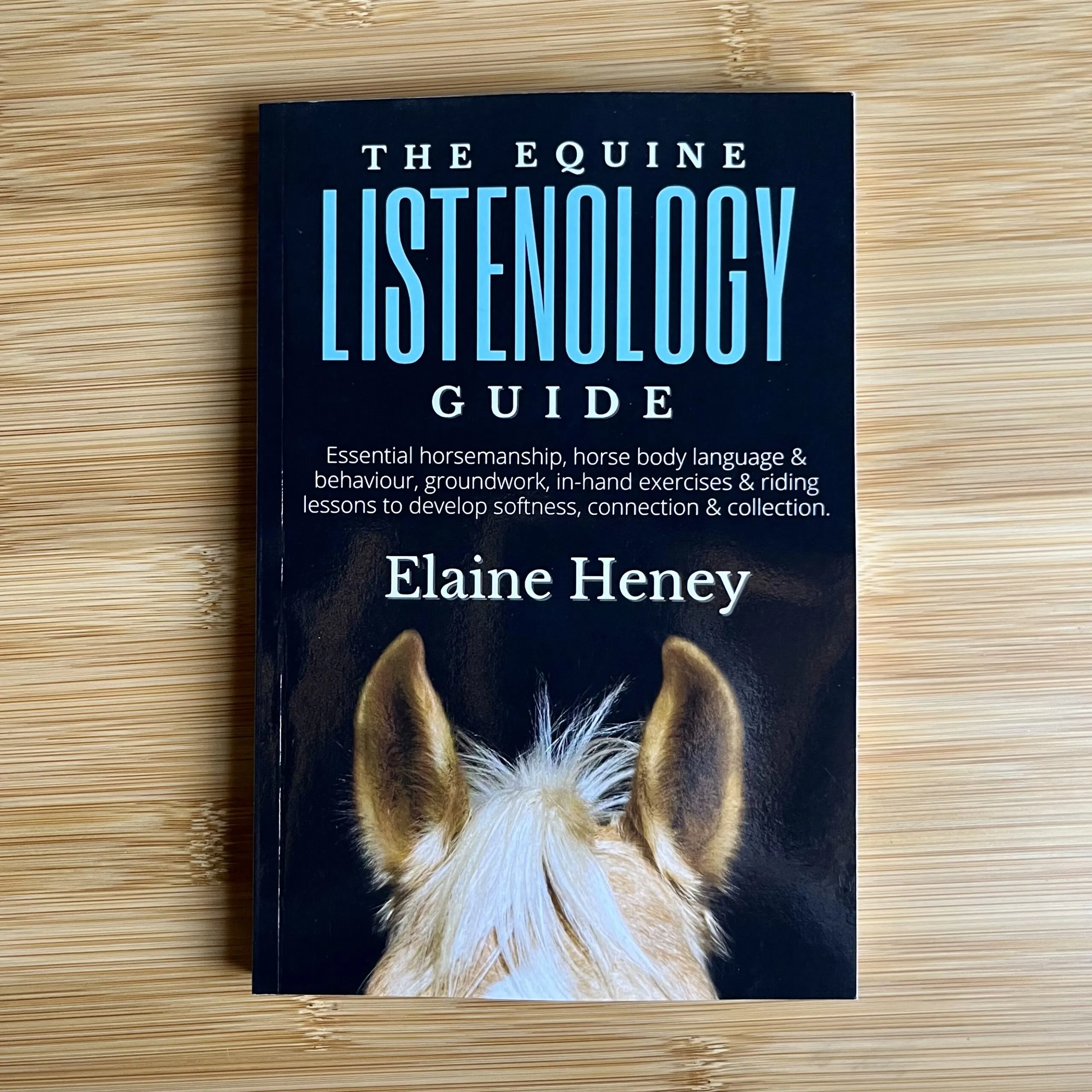It is rare for a horse to bite someone, and if they do bite, it’s usually a warning and not an act of aggression. Nonetheless, if you are unfortunate enough to experience a bite, it hurts like nothing you have ever felt before. If you have a horse that does bite, the behavior needs to be corrected before someone is seriously injured.
In this article, you will discover:
- 3 ways how to teach your horse not to bite
- How to play defense and not get bit by a horse
- The top 3 things you should NEVER do when trying to stop your horse from biting
How to stop a horse from biting
Start young
The best way to stop a horse from biting is to make sure they never start the habit. If you have a very young horse, teach them not to bite while they are still a foal/yearling. When horses are young, they explore and learn about the world using their mouth. They nip, bite and taste everything around them. It is essential to teach them that it is never ok to touch you with their mouths while they are in this stage of learning.
Don’t Feed a Horse Treats by Hand
✋🏼🚫🍎 If you have a horse prone to biting, feeding your horse treats by hand will cause them to associate biting with receiving treats. Instead of providing treats by hand, cut up the apple and carrots and place them into a bucket, then allow them to eat from the bucket only.
Apply Behavioral Conditioning
Have you ever heard of Pavlov’s dog? Pavlov’s dog was the very first recorded instance of behavioral conditioning. It was the foundation of behavioral psychology as a discipline. Essentially, Ivan Pavlov rang a bell just before feeding his dog every day. Eventually, the dog associated the sound of the bell with food and would begin to salivate even if Pavlov did not give him any food. This discovery has widespread applications, including the ability to prevent your horse from biting.
For this technique to work, you need your horse to associate biting with another stimulus. For example, you could tap your horse’s hock with your foot every time they try to nip or bite you. In that case, they will eventually associate biting you with an uncomfortable feeling on their hock. Once the association is made, whenever your horse starts to bite you, they will:
- Begin to bite, then stop
- Look down at their hock and think for a moment
- Decide not to bite and move their head away
Behavioral conditioning is a proven technique and is worth a try. This technique may sound confusing, so here is a step-by-step guide on implementing this fix.
- Anticipate the bite. Look for warning signs like pinned ears or jerking their head in your direction.
- At the same time that they try to bite you, tap the back of their hock with your boot (Be gentle. This should not hurt your horse, you are just making them feel a new sensation).
- Do not look at your boots, the horses’ hooves, or the horses face when you tap them with your boot. Keep looking straight ahead and continue with whatever task you are completing. They should never know it is you doing it.
- Repeat every time they try to nip or bite you.
Running Defense: Strategies to Never Get Bit by a Horse
Teaching your horse not to bite can be a long process, so it is also essential to know how to defend yourself against a horse bite. Our top 2 defense suggestions are:
Stay out of biting range.
If your horse can’t reach you, it can’t bite you. Staying out of range is the most effective defense against your horse’s bite.
Don’t let them bite flesh.
The most painful place to receive a nip or small bite is anywhere fleshy. If your horse likes to bite you on the arm, when they move to bite you, reposition your arm so that they are aiming for your elbow. They will have a hard time biting your elbow, and they will also likely knock their lip and startle themselves.

🙅🏼♀️ 3 Things you should NEVER do to prevent biting
Biting is a potentially dangerous behavior that you need to address immediately. However, there are a few things that you should NEVER do when teaching your horse not to bite.
1. Never hit your horse.
It is never ok to hit your horse. If you do, your horse will come to fear you and can become even more aggressive. Hitting your horse can also injure them and should be avoided at all times.
2. Don’t swat them away.
Swatting your horse’s head away from you becomes a game for your horse. They try to bite, and you swat at them, the horse avoids your hand, and then they do it again. It ends in an endless loop of playtime for your horse and encourages them to nip more often.
3. Don’t reward them for biting.
If your horse shows any aggression towards you, don’t give your horse love and affection to calm them down. Showing affection to calm them causes the horse to associate aggressive behavior with cuddles and treats, causing more aggressive behaviors in the future.
Horse Bites Hurt! Here’s why:
If you are lucky, you have never experienced a horse bite. However, you might wonder how badly a horse bite hurts.
Horse teeth are not sharp, and they don’t tear into the skin like a dog bite would. Instead, their blunt teeth crush objects through strength. Horse bites have an incredible amount of power. When a horse uses the full force of its jaw, it can apply up to 500 pounds of pressure per square inch. A human bite only has up to 200 pounds per square inch.
Several years ago, I owned a bitey horse. However, my horse wasn’t mean, so her bites were never too painful. They were warning shots aimed at my thigh when she didn’t feel like having her hooves cleaned. While those small bites hurt and left a bruise that lasted well over a week, they were not dangerous. However, some horse bites are incredibly dangerous. The habit needs to be corrected as soon as possible.
Types of Horse Bites
When explaining horse bite to friends, I usually break it down into three different types of bite:
😕🔈 Nip: A nip is usually a warning shot that says they are not happy with you, but they are not necessarily trying to hurt you.
😠🔉 Bite: A small bite is more powerful than a nip and will leave you in pain for weeks. This bite doesn’t usually break through the skin, but it will leave a large black bruise that doesn’t want to go away. A small bite usually comes after one or two warning nips.
🤬🔊 Attack Bite! These bites are rare, and the horse usually needs to be provoked to resort to this. This type of bite is where the horse grabs on with all 500 pounds of force and does not let go. Full-fledged bites are incredibly dangerous, and people have lost fingers because of these bites.
It is true that horses bite. And some horses bite more than other horses. It’s part of a horse’s natural behavior.
Horse Bites in the Wild
In the wild, horses bite each other as a way of communication. It’s a form of bonding and boundary setting like humans use words. Horses may bite to show:
- Love. When horses love bite, it looks like friendly nibbles on another horse to express affection and bonding,
- Get out of my way! Bossy, chompy bites in a herd tell other horses to move and help communicate roles and boundaries.
- Aggression. Serious, aggressive biting may occur, in the wild, when horses are fighting for survival or for a mate.
Often, horses hurt each other this way, that’s why we need to take precautions when letting horses mingle. However, the bites are commonly not so strong, so they don’t cause severe damage.
When Horses Bite Humans
However, the case is different when horses bite humans. Human skin isn’t as thick as horse skin, and let me say from my own experience, horse bites are painful!
Horses will bite humans for almost similar reasons they bite other horses. They consider us as part of their herd, and they have to find ways to communicate with us as well. They nip you as a friendly way to greet you. They will nip you to tell you you’re in their way. They will also bite you to express anger. This natural horse behavior can be harmful to humans for the simple fact that horses are more powerful than us.
Thus, it’s necessary that you discourage this behavior.
The Link between Horse Treats and Biting
Horses also have a tendency to bite you if you have a habit of feeding them horse treats with your hand. Personally, I do not give horses carrots, apples, and other forms of treats by hand, or encourage others on my farm to do so. Here’s why:
Reasons You Shouldn’t Feed Horses By Hand
- Horses have bad aim! The aim of horses is not that good and they can bite your fingers or your entire hand along with your treat.
- Poor visibility. Horses can’t see under their mouth.1 When the treat isn’t there anymore, they’re probably not aware- but expect it because the smell of your treat is still on your hand. This can cause accidental bites.
- Expectations. Even when your hand hasn’t touched a treat in a while, your horse could bite you because they’re expecting a treat.
The Best Advice For Handling Treats
The best advice is to give horses treats from a bucket. This dissociates your hand from the treat-reward process and presents accidental bites. It’s a great way to stay away from injury due to bad habits.
The following section may contain affiliate links. As an Amazon Associate, we earn from qualifying purchases.
Final Thoughts on Ending Biting Once and For All
A horse bite can be incredibly dangerous and you can help combat their biting habit by using several different strategies. Once the biting behavior is eliminated, you will likely discover that spending time with your horse will become more enjoyable.
Keep in mind that if you want to get the best results when training your horse, you must remain calm and patient. If you get angry or frustrated, your horse will pick up on this and respond poorly. If you are easily frustrated when training your horse, it is best to hire a trainer to correct the behavior for you. Click here to see our guide on selecting a great trainer for your horse.
Need more suggestions on curbing this behavior? Check out these two books: What It Really Takes to Start and Run A Horses Business includes tips and tricks for managing “bad horse behavior,” while The Equine Listenology Guide proposes ways to build deeper connections with your horses to develop better behavioral patterns.
- Timney, B., & Keil, K. (1992). Visual acuity in the horse. Vision Research, 32(12), 2289-2293. [↩]


